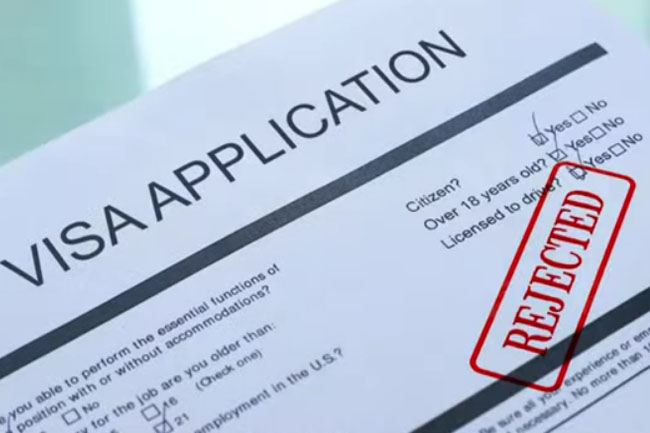An agenda to reduce the number of visas by calling them streams under a broader umbrella is a waste of time and resources, writes Dr Abul Rizvi.
THERE ARE many things wrong with our current visa system that need to be fixed.
Treasury has complained that ‘with more than 70 unique visa programs, each with complex criteria and subcategories and hundreds of individual labour agreements and skilled occupation lists sitting over the top, changing eligibility rules are overwhelming potential applicants’.
So should reducing the number of visa categories be the priority in fixing the visa system?
When I was the head of the Migration and Temporary Entry Division in the former Department of Immigration (now more than 20 years ago), I often wondered whether we really needed the number of temporary entry visas we had. While we abolished some visas which were no longer used, there were very few active visas we were able to abolish.
The only one I can recall is the old temporary resident Medical Practitioner visa which we gradually merged into the more general Skilled Temporary visa subclass 457 by aligning the regulatory requirements and visa conditions.
The reality is that to reduce the number of visas and genuinely achieve simplification requires the regulatory requirements of two or more visas and the associated rights and conditions to be aligned (effectively made identical). This would enable one or more of these visas to eventually be abolished once all existing applications in the visa have been finalised and there are no more holders of the visa to be abolished. This can often take years if not decades.
Using a top-down approach to this (“let’s reduce the number of visas to x because 70 is too many”) sounds attractive but is the wrong way to approach the issue. Unfortunately, visa simplification must start bottom up by comparing the regulatory requirements and conditions of similar visas to see where these can be fully aligned.
One example of a top-down approach to reducing the number of visas was the creation of the Temporary Activity visa subclass 408. Creation of this visa enabled a large number of former temporary visas to be abolished. However, almost all the visas that were abolished were converted into “streams” within the new visa.
These streams include:
- special programs that include arrangements for youth exchange, cultural enrichment or community programs, school language assistants or “gap year school volunteering”;
- religious work replacing the old religious worker visa;
- research activities replacing the old research visa;
- invited for other social and cultural activities;
- sporting activities replacing the old sports visa;
- entertainment activities replacing the old entertainer visa;
- superyacht crew stream replacing the old superyacht crew visa;
- exchange arrangements replacing the old exchange visa; and
- domestic work for executives replacing the old domestic work visa.
A COVID-19 stream was also added to this visa during the pandemic and remains in operation.
Each of these streams has one or more core requirements and/or visa conditions that meant they had to be created for the visa they replaced. Visa applicants still need to know which stream they are applying for and meet the requirements specific to that stream. This was just an exercise in “smoke and mirrors”. Visa simplification is not achieved by simply collecting some related visas under one umbrella visa with a large number of visa “streams”.
Another example of “visa simplification” was the creation of the subclass 403 Temporary Work visa. This helped reduce the number of visas but also through the creation of a number of streams and sub-streams.
One of the major streams in this visa is the International Relations stream which includes the following sub-streams:
- Government Agreement stream;
- Foreign Government Agency stream;
- Domestic Worker (Diplomatic or Consular) stream;
- Privileges and Immunities stream; and
- Pacific Australia Labour Mobility stream.
Yet another example of “visa simplification” by collapsing a number of old visas under an umbrella visa with many streams is the subclass 600 Visitor visa with the following streams that replaced previous visas that played the same role:
- Business Visitor stream;
- Frequent Traveller stream;
- Sponsored Family stream;
- Tourist (applying outside Australia) stream; and
- Tourist (applying within Australia) stream.
These visitor visas are still separate from subclass 601 Electronic Travel Authority and subclass 651 eVisitor as it appears the Department was unable to find a way to include these within the new Visitor visa subclass 600.
And yet another example of “visa simplification” was to collapse the eight different student visa sectors (such as schools, higher education, vocational education) under an umbrella Student visa subclass 500. But Student visa applicants still apply for a visa linked to one of the eight sectors, each of which has slightly different requirements.
Simplifying the visa system is a laudable objective. Genuine simplification requires hard policy work and taking sometimes difficult decisions. That is the work the Parkinson Review must do. It then takes lengthy planning to implement the changes, including regulatory and systems changes.
But an agenda to just reduce the number of visas by calling them streams under a broader umbrella visa doesn’t really achieve much other than wasting valuable time and resources. A better approach is to work out where the unnecessary complexities, costs and time delays are and to fix these with the objective of improving the health of the visa system in a measurable way.
Dr Abul Rizvi is an Independent Australia columnist and a former Deputy Secretary of the Department of Immigration. You can follow Abul on Twitter @RizviAbul.
Related Articles
- Visa lottery: Solution in search of a problem
- New pathway to permanent migration encourages gaming of visa system
 This work is licensed under a Creative Commons Attribution-NonCommercial-NoDerivs 3.0 Australia License
This work is licensed under a Creative Commons Attribution-NonCommercial-NoDerivs 3.0 Australia License
Support independent journalism Subscribe to IA.














